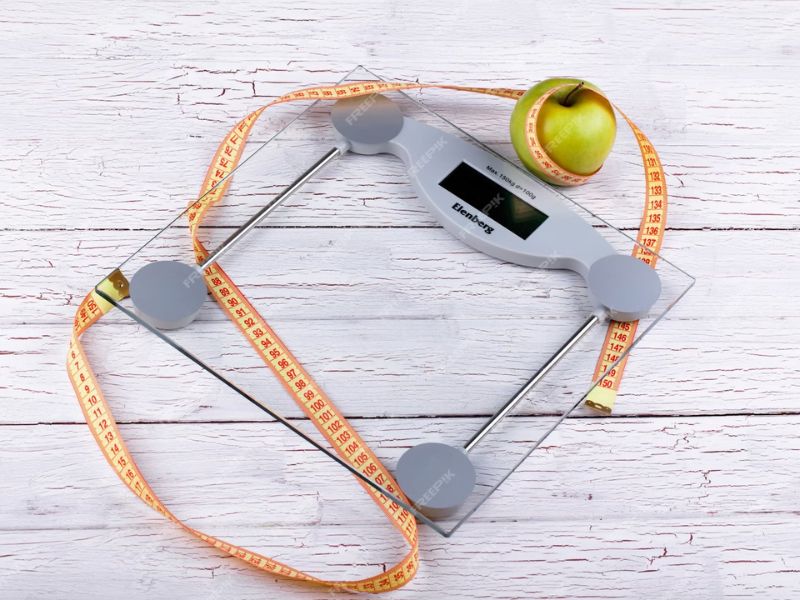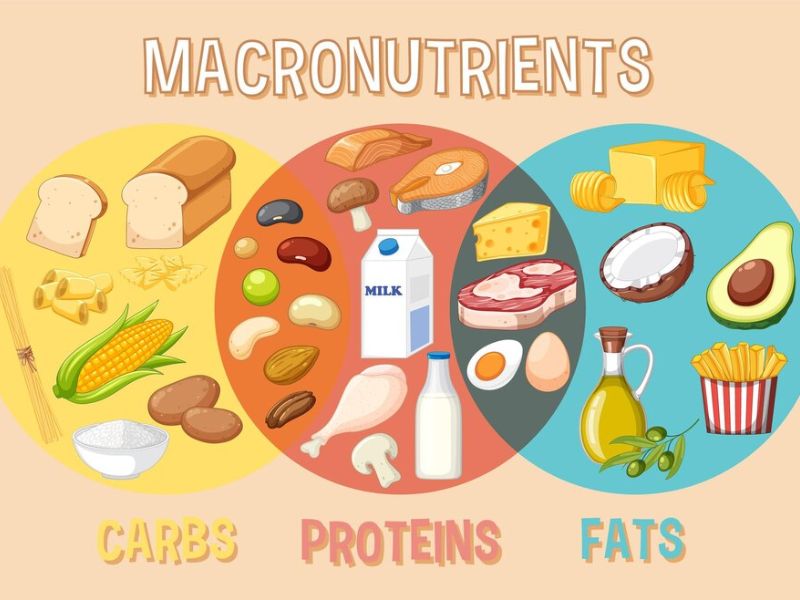Did you know that endless cardio isn’t the only option for weight loss? Strength training is a powerful tool that can help you shed pounds and improve your overall health. A study published in the National Institutes of Health Journal found that strength training, combined with diet, led to greater weight loss and belly fat reduction compared to cardio alone [*].
This article is your one-stop guide to getting started with strength training for weight loss. We’ll cover the benefits, how to create a personalized plan, different exercises, and even the importance of rest and recovery.
Benefits of Strength Training for Weight Loss
Forget endless cardio. Strength training is your secret weapon for weight loss and overall health. Here’s how it goes beyond the scale:
1. Burn Calories While You Rest
Muscle is metabolically active, burning calories even at rest. A 2014 study published in the National Institutes of Health Journal found that strength training, combined with diet, led to greater weight loss and belly fat reduction compared to cardio alone [*]. Strength training builds muscle mass, essentially turning your body into a calorie-burning furnace.
2. Body Composition: More Than Just a Number

Weight loss isn’t just about the scale; it’s about body composition – the ratio of muscle to fat. Strength training helps shed excess fat while building lean muscle. This doesn’t just sculpt your physique, but improves strength and endurance for daily activities [*]. Imagine carrying groceries with ease or conquering stairs without feeling like a winded dragon.
3. Boost Your Metabolism for the Long Term

Strength training offers a permanent metabolic upgrade. By increasing muscle mass, you elevate your resting metabolic rate (RMR) – the number of calories your body burns at rest. A study published in the Journal of Applied Physiology found that strength training increased RMR even 24 hours after exercise [*]. This afterburner effect keeps you burning calories throughout the day.
Ready to Wield the Strength Training Weapon?
Are You a Beginner?
If you can comfortably perform 10 bodyweight squats or push-ups, you’re ready to begin. We’ll equip you with the knowledge to build your personalized routine.
Already Fit?
Challenge yourself with advanced strength training resources (link to articles).
4. Strength and Endurance for an Active Life

Forget struggling with daily tasks. Strength training builds strength and endurance, making everyday activities easier and allowing you to participate in the activities you love with more energy [*].
Track your daily steps for a week before starting strength training. Repeat after a week of workouts. Did you notice an increase?
Strength training can also help you:
- Keep up with energetic kids or grandkids
- Conquer that hiking trail you’ve been eyeing
- Dominate that weekend sports game with your friends
5. Build a Strong Foundation to Protect Yourself

Strength training strengthens bones and muscles, reducing your risk of injuries and improving overall body stability [*]. This is crucial as we age, helping to prevent falls and maintain an active lifestyle. Imagine being your own bodyguard.
Test your current stability: Try standing on one leg for 30 seconds. Can you do it easily?
Strength training can help you:
- Improve balance and coordination
- Reduce your risk of falls and injuries
- Maintain an active lifestyle well into your golden years
6. Defend Yourself Against Chronic Diseases

Strength training can help reduce the risk of chronic diseases like type 2 diabetes, heart disease, and even some cancers [*]. By improving your overall health and fitness, strength training can contribute to a longer, healthier life.
Strength training can improve insulin sensitivity, which can be beneficial for managing type 2 diabetes.
Embrace Strength Training for:
- Reduced risk of chronic diseases
- Boosted overall health and well-being
- A longer, healthier life
Strength training goes beyond weight loss. It’s an investment in your overall health and well-being. Let’s get started.
Creating Your Personalized Weight Training Plan

Ready to ditch the endless cardio and build a stronger, leaner you? Strength training is your secret weapon. But where to begin? Don’t worry, we’ll keep it simple.
Step 1: Beginner or Badass?
First, a quick self-check. Are you new to exercise (beginner) or have you dabbled with weights before? This helps pick the right starting point. No shame in starting light – everyone starts somewhere.
Step 2: Small Wins, Big Results

Don’t aim to be a superhero overnight. Set achievable goals. Aim to lose 1-2 pounds a week and gradually increase weight or reps as you get stronger. Here are some examples:
- Beginners: Aim for 2 x 30-minute strength workouts a week. Master 3 bodyweight exercises with proper form.
- Everyone: Set a goal to add a new exercise targeting a different muscle group.
Step 3: Choose Your Weapons (Exercises.)

Focus on compound exercises that work multiple muscles at once, maximizing your calorie burn. Think squats, lunges, push-ups, rows, and planks – these are your basic tools.
Here are some resources to find exercises:
- Beginners: Look up bodyweight exercise tutorials online.
- Everyone: Explore weight training apps or websites for exercise demonstrations.
Step 4: Master Your Technique

Proper form is key to avoid injuries and maximize results. Think of it as sharpening your sword before battle. Consider a trainer or instructional videos to learn proper form for each exercise. Remember, it’s better to start lighter and perfect your form than go heavy and risk injury.
Building Your Strength Training Program
Conquered the basics? Now it’s time to craft your personalized strength training program. Here’s a step-by-step approach:
Step 1: Know Your Enemy (Fitness Goals)

Imagine yourself as a mighty warrior, ready to conquer the land of weight loss. But first, a war council is necessary. Here’s what we need to consider:
- Your Fitness Goals: Are you aiming to shed pounds, sculpt muscle, or gain overall strength? Knowing your goals helps us choose the right exercises and structure your routine.
- Your Experience Level: Are you a battle-hardened warrior (experienced) or a fresh recruit (beginner)? This determines the intensity and complexity of your workouts.
- Your Time Commitment: How much time can you realistically dedicate to training each week? Be honest – cramming in hour-long sessions you can’t maintain won’t win the war.
Step 2: Assessing Your Arsenal (Fitness Level and Time Commitment)
Just like a warrior needs the right weapons, you need exercises that match your experience level. Beginner? Start with bodyweight exercises or light weights. Already a fitness enthusiast? You can incorporate more challenging exercises and weights.
Now for the time commitment: Be honest with yourself. How much time can you realistically dedicate to strength training each week?
Here’s an interactive quiz to assess your experience level and time commitment:
- How comfortable are you with exercise? (Beginner, Intermediate, Advanced)
- How many days per week can you commit to strength training? (2-3 days, 4-5 days)
Start Low and Grow: Remember, Rome wasn't built in a day. Begin with a low volume (sets and reps) to avoid injuries and allow your body to adapt. Gradually increase the intensity and duration of your workouts as you get stronger.
Step 3: Building Your Routine (Sample Beginner Workout.)
Now for the fun part – designing your personalized battle plan. Here’s a sample 3-day split routine for beginners, targeting major muscle groups with bodyweight exercises or light dumbbells:
Day 1: Lower Body (Focus on legs and core)

- Squats: 3 sets of 10-12 repetitions
- Lunges: 3 sets of 10 repetitions per leg
- Plank: 3 sets of 30-60 seconds hold
Day 2: Upper Body (Focus on chest, back, and shoulders)

- Push-ups (modified or regular): 3 sets of as many repetitions as possible (AMRAP)
- Rows (using a chair or resistance bands): 3 sets of 10-12 repetitions
- Overhead press (using dumbbells or water bottles): 3 sets of 10-12 repetitions
Day 3: Rest and Recharge.

Remember: This is just a sample. You can find tons of beginner-friendly workout routines online or in fitness apps.
Step 4: Leveling Up. (Progression is Key)
After a few weeks, your muscles will adapt, and you’ll need to increase the difficulty to keep seeing results. Here’s how to level up your workouts:
- Increase Weight: Once you can comfortably perform the recommended sets and reps, consider adding light weights (dumbbells or kettlebells).
- Increase Sets/Reps: Gradually increase the number of sets or repetitions you perform for each exercise.
- Decrease Rest Time: Shorten your rest periods between sets to challenge your muscles further.
Strength Training Exercises
Forget fancy gym moves. We’re building a strong, fit YOU with simple exercises. Here’s your beginner’s guide to strength training, categorized by equipment: dumbbells, resistance bands, or just your bodyweight.
Ready to unleash your inner warrior? Let’s do this.
Dumbbell Fury (Light weights or grab some soup cans.)

- Goblet Squat: Targets thighs, glutes, and core. Hold a weight close to your chest, squat down as if sitting in a chair, back straight. (Strengthens legs and core)
- Dumbbell Row: Back and bicep workout. Hold weights, palms facing in. Hinge at your hips, back straight, and row the weights up like giving yourself a hug. Slowly lower them back down. (Strengthens back muscles and improves posture)
- Overhead Press: Strengthens shoulders. Hold dumbbells or water bottles above your shoulders, press straight up, then lower back down. (Strengthens shoulders)
Resistance Band Rebellion (Add some extra challenge.)

- Banded Squats: Regular squats with a twist. Loop a band around your legs, just above your knees. Squat as usual, feeling the extra resistance.
- Banded Rows: Similar to dumbbell rows, but with a band. Anchor the band under your feet and hold the ends. Row as described earlier, feeling the band’s resistance.
Bodyweight Blitz (No equipment needed.)
- Squats: The king of lower body exercises. Stand with feet shoulder-width apart and squat down as if sitting in a chair, keeping your back straight.
- Lunges: Great for quads, glutes, and core. Step forward with one leg, lowering your hips until both knees are bent. Push back up and repeat with the other leg.
- Push-ups (Modify as needed.) In a high plank position, lower your chest towards the ground, keeping your core engaged and back straight. Too hard? Do push-ups on your knees or against a wall.
Nutrition for Weight Loss Success

You’ve unlocked the power of strength training, but remember, warriors need proper fuel. Nutrition plays a critical role in weight loss success. Here’s how diet and exercise work together to help you shed pounds and build a healthier you.
Diet & Weight Loss: A Match Made in Muscle Heaven

Imagine this: you’re crushing your workouts, building muscle, and burning calories. But then you overeat. What happens? Your progress slows. To truly conquer weight loss, you need to create a calorie deficit – burning more calories than you consume.
Studies by the National Institutes of Health show that a balanced diet combined with exercise leads to more weight loss and belly fat reduction compared to exercise alone [*].
The Macro Magic: Understanding Macronutrients

A balanced diet goes beyond just counting calories. It’s about understanding macronutrients – carbs, fats, and protein. Here’s a quick breakdown:
- Carbs: Provide energy for your body. Focus on complex carbs like whole grains, fruits, and vegetables, which offer sustained energy and fiber.
- Fats: Essential for hormone regulation and satiety. Choose healthy fats like those found in nuts, seeds, avocados, and olive oil, which can also aid in nutrient absorption.
- Protein: Builds and repairs muscle tissue. Aim for 1 gram of protein per pound of bodyweight to support muscle growth and metabolism.
Sample Meal Plan:

This is a sample desi meal plan emphasizing complex carbs, healthy fats, and lean protein:
- Breakfast: Sprouted moong dal cheela with chopped vegetables and low-fat curd (dahi) – Provides protein, fiber, and healthy fats.
- Lunch: Rajma masala (kidney beans curry) with brown rice (chawal) and a side salad – Offers protein, complex carbs, and essential vitamins.
- Dinner: Grilled chicken tikka with roasted vegetables (palak, bhindi) and a small whole wheat roti – Lean protein, fiber, and essential vitamins and minerals.
- Snacks: Roasted makhana (foxnuts), a handful of mixed nuts, fruit with Greek yogurt – Provides sustained energy and healthy fats.
Cardio Considerations

Conquering weight loss is a multi-faceted battle, and while strength training builds muscle and revs your metabolism, cardio is another weapon in your arsenal. Here’s why:
The Calorie-Burning Machine:
Strength training builds muscle, but cardio gets your heart pumping and burns serious calories. Think of it as torching extra fuel after you’ve built that calorie-burning muscle mass with strength training. It’s a double whammy for weight loss.
Different Strokes for Different Folks: Cardio Options for Beginners
There’s no one-size-fits-all cardio approach. Here are some beginner-friendly options to get you started:
- Brisk Walking: It’s simple, effective, and requires no equipment. Put on your favorite walking shoes and hit the pavement.
- Swimming: Low-impact and refreshing, swimming is a great way to get your heart rate up without stressing your joints.
- Jogging: Feeling a little more adventurous? Ease into jogging. Start with short distances and gradually increase as you get comfortable.
- Cycling: Indoor cycling or exploring nature on a bike – it’s your call. Cycling is a fun way to burn calories.
Finding Your Cardio Groove: Frequency, Intensity, and Duration
Now, let’s talk about how much cardio you need. Here’s a general guideline:
- Frequency: Aim for at least 150 minutes of moderate-intensity cardio or 75 minutes of vigorous-intensity cardio per week. You can break this down into smaller sessions throughout the week.
- Intensity: Moderate-intensity means you can carry on a conversation while exercising, but you’re breaking a sweat. Vigorous-intensity means you can only speak a few words at a time.
- Duration: Start with 20-30 minute sessions and gradually increase as your fitness improves.
Importance of Rest and Recovery

You’ve been crushing your workouts, but remember, warriors need time to heal and rebuild. Rest and recovery are crucial for muscle growth and preventing injuries. Think of it like sharpening your sword – you wouldn’t jump into battle with a dull blade, would you?
Rest & Recovery: The Muscle-Building Powerhouse
Strength training breaks down muscle fibers, and during rest, your body repairs and rebuilds them stronger. This is called muscle protein synthesis, and it’s the key to building muscle mass. So, skipping rest days actually hinders your progress.
Sleep, Glorious Sleep: Your Body’s Recharge Station
While you sleep, your body repairs tissues, strengthens your immune system, and boosts cognitive function. Aim for 7-8 hours of quality sleep each night to optimize your recovery and maximize your results.
Active Recovery: Moving Your Way to Better Recovery
Rest doesn’t mean being a couch potato. Light activity like yoga, walking, or swimming on rest days can improve blood flow, reduce muscle soreness, and promote healing.
Warm Up & Cool Down
Just like a car needs a warm-up before hitting the highway, so does your body. A dynamic warm-up prepares your muscles for exercise by increasing blood flow, improving flexibility, and reducing your risk of injury.
Here’s a sample dynamic warm-up routine you can try:
- Light jog in place (30 seconds): Get your heart rate up and blood flowing.
- Arm circles (forward and backward x 10 each): Loosen up your shoulders and upper body.
- High knees (30 seconds): Engage your core and get your legs warmed up.
- Butt kicks (30 seconds): Activate your glutes and hamstrings.
- Lunges with arm swings (10 per leg): Improve mobility and core stability.
After your workout, don’t just collapse on the couch. A cool-down helps your body gradually transition back to rest and promotes flexibility. Here are some static stretches to incorporate into your cool-down:
- Hamstring stretch: Sit on the floor with legs extended, reach for your toes (hold for 30 seconds).
- Quad stretch: Stand on one leg, pull your foot up behind you towards your glutes (hold for 30 seconds per leg).
- Calf stretch: Lean against a wall with one leg forward, push your heel down (hold for 30 seconds per leg).
- Chest stretch: Stand in a doorway, press your forearms into the frame and open your chest (hold for 30 seconds).
Conclusion
In conclusion, strength training is a powerful tool for weight loss and overall health. It builds muscle, which burns more calories at rest, helps you shed fat and build lean muscle, and improves your metabolism.
This article provides a beginner-friendly guide to getting started with strength training, including creating a personalized plan, different exercises, and the importance of rest and recovery.
Remember, consistency is key, and start slow and gradually increase the intensity of your workouts as you get stronger. With dedication and the right approach, you can achieve your weight loss goals and build a stronger, healthier you.


1 thought on “How to start strength training for weight loss for beginners?”